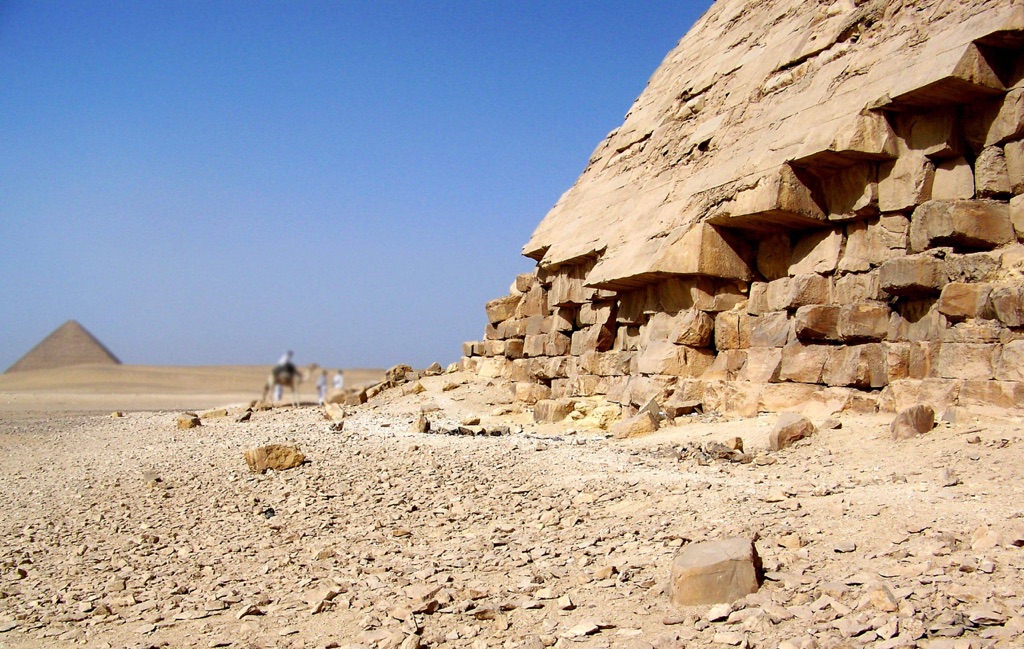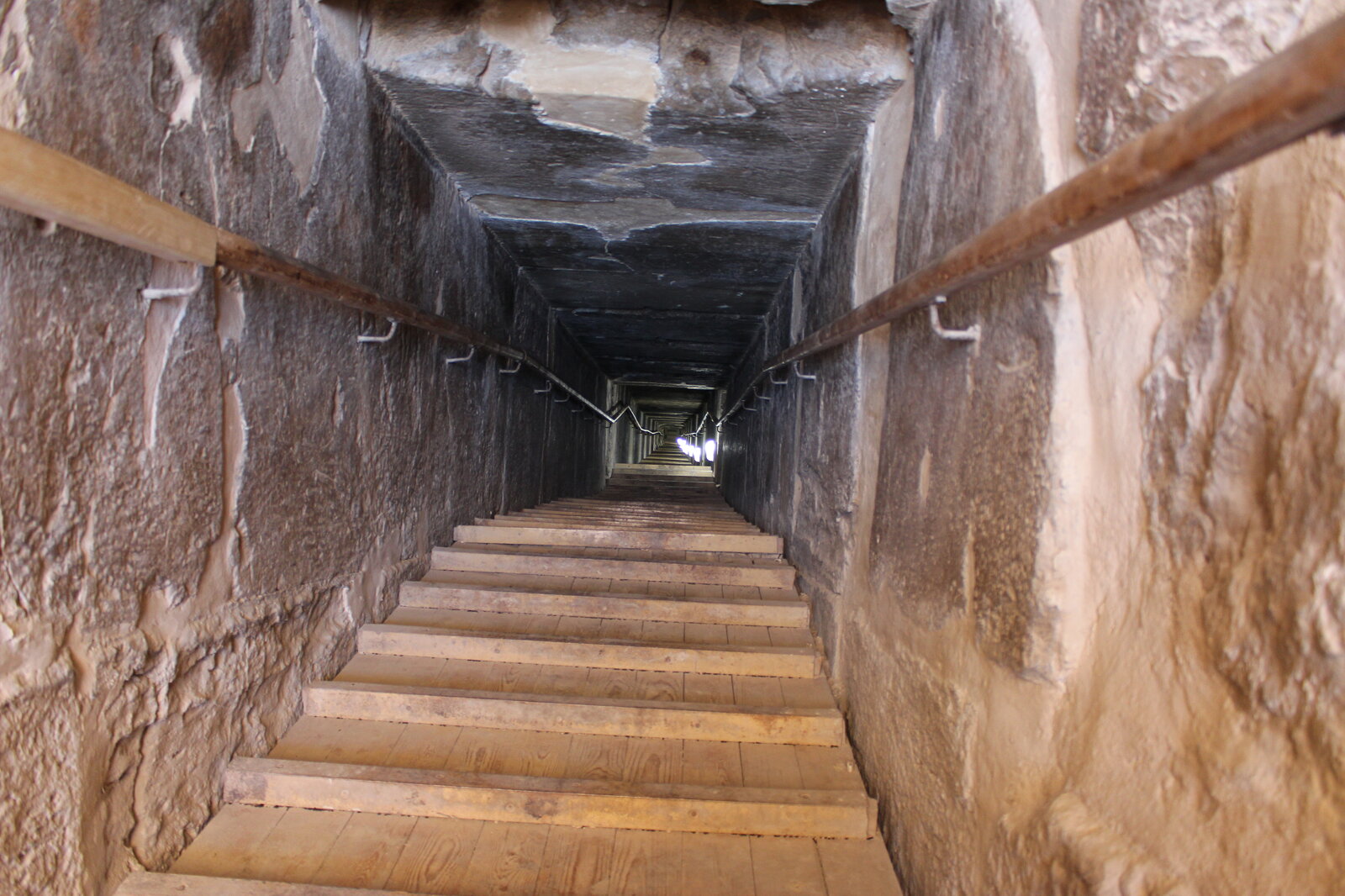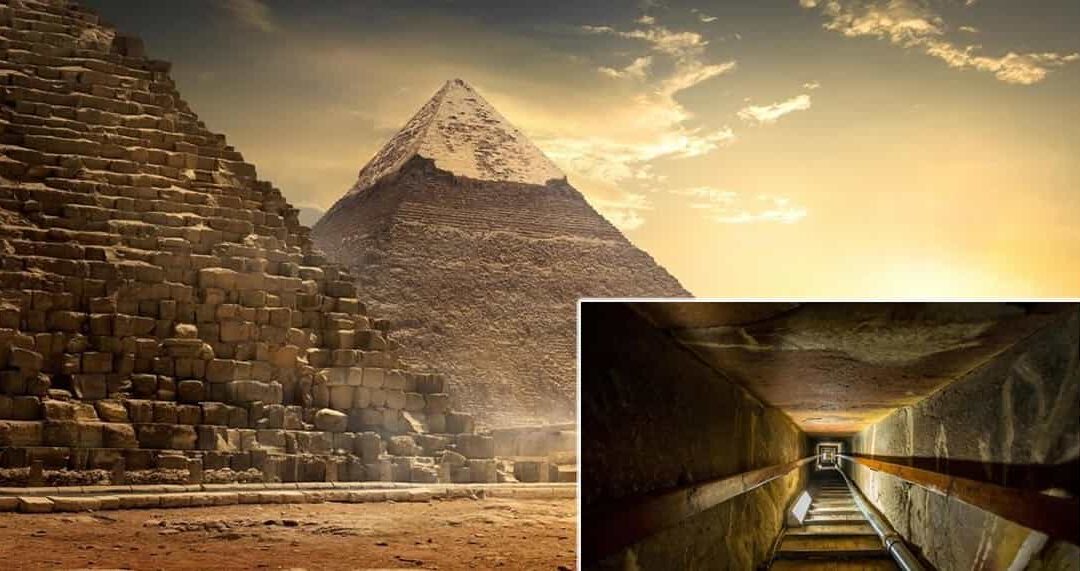The Bent Pyramid, located in Dahshur, Egypt, is a fascinating example of early pyramid construction, showcasing the architectural innovation of the Old Kingdom. Built during the reign of Pharaoh Sneferu around 2600 BCE, it is the second-oldest pyramid made entirely of stone, following the Step Pyramid of Djoser. Its distinctive “bent” shape, caused by a shift in the angle of inclination halfway up, makes it a key transitional structure in the evolution of pyramid design.
Architectural Design and Unique Features
The pyramid’s design is characterized by two distinct slopes: a steep 54-degree angle at the base that transitions to a gentler 43-degree angle near the top. This change is believed to have been made to prevent structural collapse, reflecting the adaptability of ancient Egyptian engineers.

Inside, the Bent Pyramid features two entrances—one on the northern face and another on the western face—each leading to its own chamber. The chambers are connected by a passageway and have corbelled ceilings, a technique that demonstrates advanced engineering skills. Notably, much of the pyramid’s original limestone casing remains intact, offering a rare glimpse of how these monuments appeared in their polished, reflective state.
A Turning Point in Pyramid Construction
The Bent Pyramid marks a pivotal stage in the evolution of pyramid architecture. It bridges the gap between the step-sided pyramids, like Djoser’s, and the smooth-sided structures perfected later in Sneferu’s Red Pyramid and the Great Pyramid of Giza. The angle change highlights the trial-and-error process that led to architectural refinement in ancient Egypt.

Historical Significance
As one of Sneferu’s key projects, the Bent Pyramid symbolizes experimentation and ambition in ancient construction. It provides invaluable insights into the religious and cultural significance of pyramids, serving not only as monumental tombs but also as representations of the pharaoh’s divine journey to the afterlife.

Modern Exploration
Recently opened to the public, the Bent Pyramid offers visitors a rare opportunity to explore its interior chambers and passageways. Archaeologists continue to study the structure, revealing more about the innovative techniques used in its construction.

Legacy of the Bent Pyramid
The Bent Pyramid remains a testament to the ingenuity and adaptability of ancient Egyptian builders. Its unique design and historical importance make it an enduring symbol of the architectural achievements of the Old Kingdom, offering a deeper understanding of one of history’s most remarkable civilizations.

